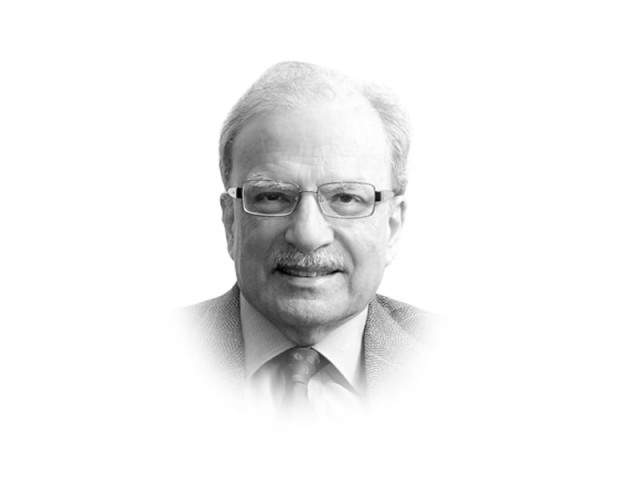Development of land-based economic systems
When future historians look back on the development of Pakistani economy, they will read 2015-2016 as game-changing

The writer is a former caretaker finance minister and served as vice-president at the World Bank
I don’t know how much time the finance minister spent on the contribution, the proposed China-Pakistan Corridor (CPEC) is likely to make to the structure of the country’s economy and the pattern and pace of its growth. I believe that when future historians look back on the development of the Pakistani economy, they will read the years 2015-2016 as game changing. A new development paradigm would have been put in place.
Most early works on economic development and growth focused on constraints. Savings were generally regarded the most important determinant of growth. However, these were very low in the world’s developing nations. Subsistence requirements claimed most of what individual households produced. As scores of countries emerged from colonial rule, those placed in leadership positions became concerned with the process and pace of development. The long drawn-out campaign for gaining independence from colonial rule had increased people’s expectations. These had to be satisfied. How to quicken the rates of economic growth and to distribute its rewards equitably became two of the most important questions that got asked.
The easier answer to the two questions was to kick-start growth by obtaining external resources to augment paltry domestic savings. Thus was born the economics of foreign aid — how much the developed world was prepared to provide to less advanced nations and to what use, foreign aid should be put. The world’s rich nations led by the United States were responsive to the demands of the nations emerging from centuries of colonial rule and exploitation. Unlike European colonialists, America had not been a colonial power. It also became increasingly concerned that unless the West stepped in to help the developing world, the Soviet Union could make serious inroads into Africa, Asia, and Latin America. At one point, acting collectively, the West agreed to provide up to 0.7 per cent of its combined GDP as development assistance. Very few countries met this target. Those that did were the small nations in Northern Europe.
Initially, development assistance went into investments in physical infrastructure and industrial development. Later, the quality of human resource as a development issue began to attract academic and policy attention. This moved the emphasis from external action to those focused on domestic policy-making. It also came to be recognised that trade was an important contributor to growth. Empirical work established a close relationship between trade and growth: the countries with large trade-to-GDP ratios were also expected to have higher rates of growth in national income. However, accounting of trade meant international commerce, not necessarily the movement of goods and commodities within the boundaries of individual nation states.
Since most international trade moved on sea-lanes, land-based economic systems did not receive much attention from the academic community as well as the community of policymakers. It is only recently that land-based economic systems began to be looked at with interest as a source of economic growth and development. If Pakistan makes good use of the promised $45 billion investment in developing the CPEC, it could provide the lead in defining this paradigm shift.
According to one assessment, “a land based economy is by definition rooted in place, animated by its inhabitants, and conditioned by the natural resources that make up the span of its geography, however, that is defined — one day’s horse ride, river or mountain boundaries. But this is a very limited interpretation of a vast subject at the centre of productive and efficient land-based commerce. It was based essentially on local consumption. We need to extend development thinking to land-based international commerce.
There is a reason why land-based economic systems have received so little attention in development literature. The European empires were established by the conquerors and explorers who used the sea to reach distant lands. There were some examples of the use of land to reach out. This was done by the Mongolian hordes under Chengez Khan and the conquest of India by Babar, the first of the Great Mughal Emperors. But oceans were generally the conduit of conquest and commerce. It was inevitable that this would lead to use of the sea to transport goods and commodities, back and forth between the colonial powers and the territories they controlled.
This is likely to change with President Xi Jinping’s Great Silk Road Project whose purpose and ambitions have not been fully understood. Here is a role for Pakistan to play. Once the investments have been made, Pakistan’s economy will become a thriving part of the vast landmasses in Central Asia and Western China.
Published in The Express Tribune, March 9th, 2016.
Like Opinion & Editorial on Facebook, follow @ETOpEd on Twitter to receive all updates on all our daily pieces.















COMMENTS
Comments are moderated and generally will be posted if they are on-topic and not abusive.
For more information, please see our Comments FAQ